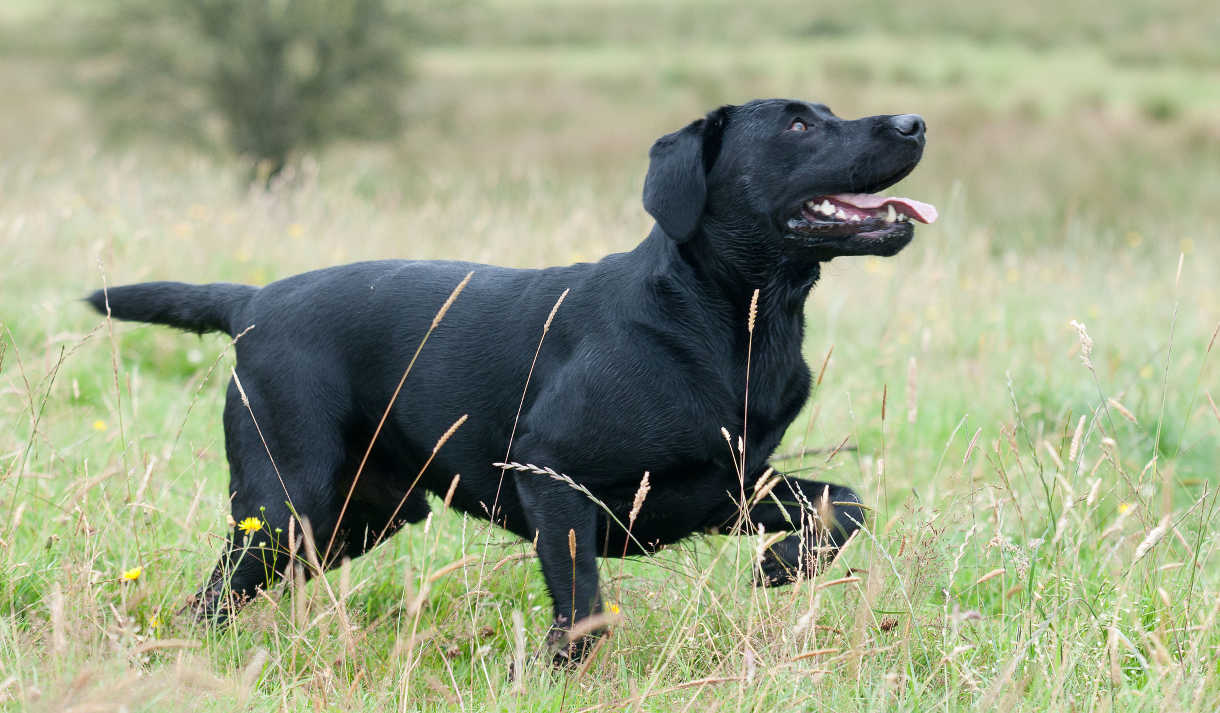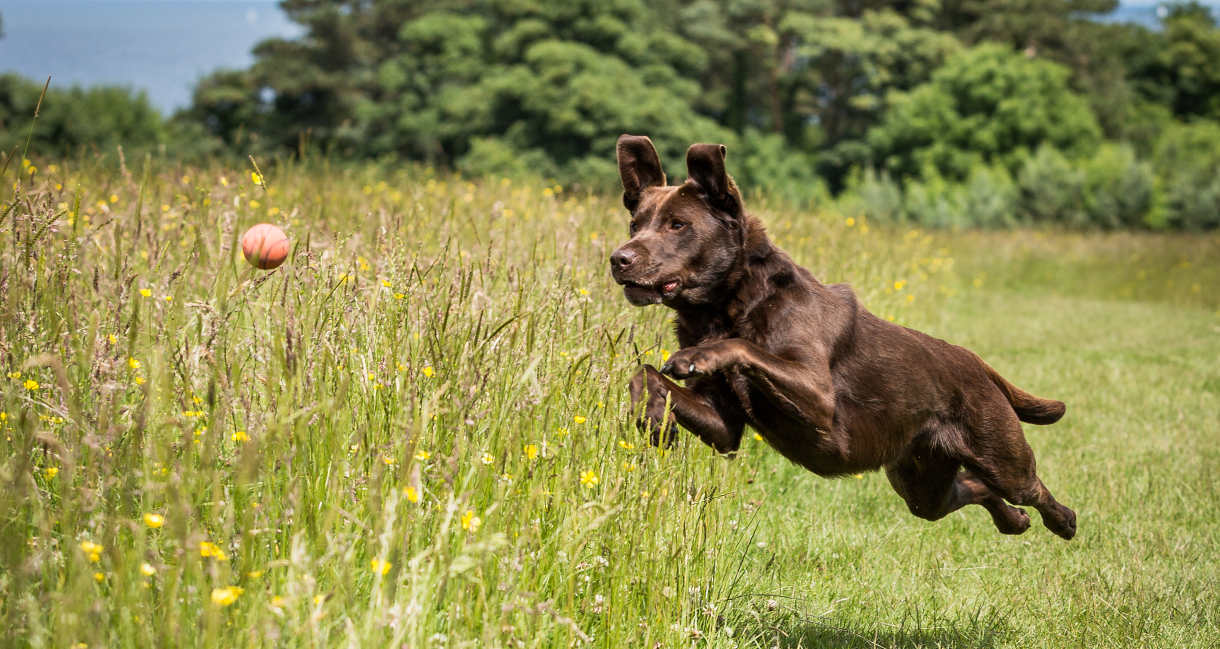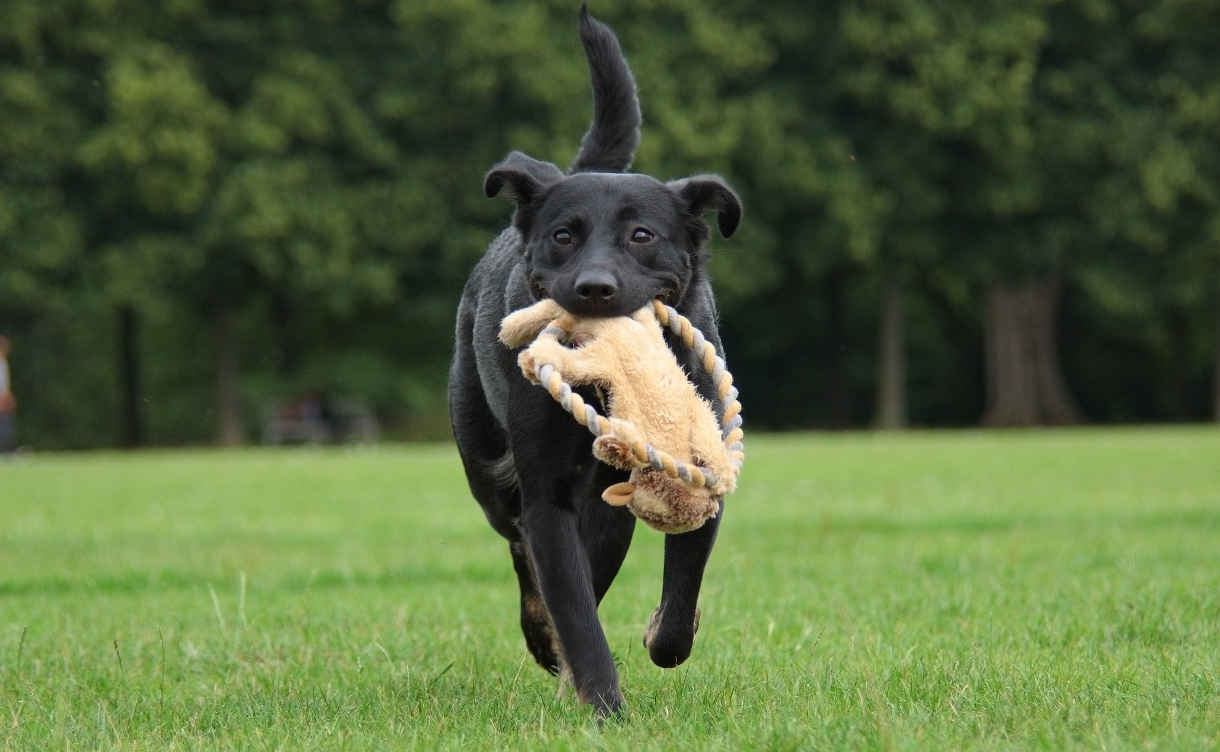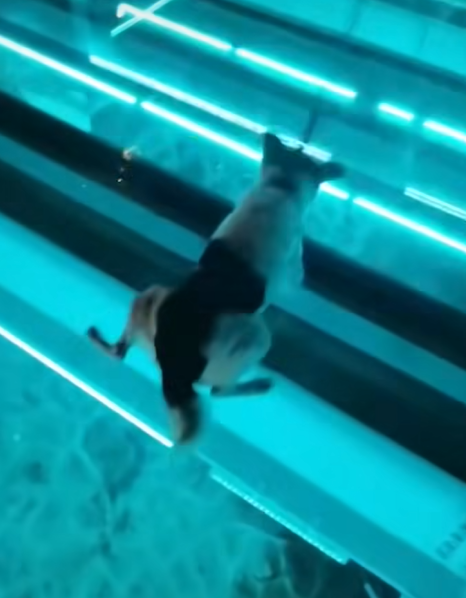Keeping your Labrador active is essential for their overall well-being. While taking them for walks or trips to the park is beneficial, there are numerous other ways to ensure they stay in good shape. Engaging in activities like fetch, agility, tracking, swimming, and obedience training not only burns calories but also boosts their metabolism, cardiovascular health, and energy levels. A consistent exercise routine will not only benefit your Labrador but also keep you on track for optimal fitness. When it comes to Labrador exercise, it’s recommended that they get at least an hour of physical activity each day. Short sprinting sessions are effective, but longer hikes are beneficial too. The key is to focus on the overall daily average exercise your dog receives, rather than just the amount on a single day. Some Labradors may require less walking or different types of activities, while others may not need much formal exercise at all. So, make sure to tailor their exercise routine to suit their individual needs.
The Importance of Exercise for Labradors Similar to humans, Labradors benefit greatly from regular exercise as it improves their overall cardiovascular health. By engaging in physical activity, Labradors can develop more blood vessels which in turn helps oxygenate their body more efficiently. In addition to this, exercise plays a key role in building muscle strength and promoting bone health in Labradors, ultimately reducing their risk of injury and potentially extending their lifespan. Moreover, regular exercise can also assist in maintaining a healthy weight for Labradors. Despite their energy-efficient nature, controlling food portions combined with physical activity is essential in keeping these dogs trim and healthy.

The Advantages And Drawbacks Of Walking Walking is a beneficial form of exercise for your furry friend. It is gentle on their joints and helps to keep their heart and lungs working well when they are off leash and can set their own pace. If you enjoy jogging or running, even better! Just make sure to build up the distance and speed gradually to ensure your dog can keep up and get a good workout too. However, if you have to walk your dog on a leash at your own pace, they may not be getting as much exercise as they need. In this case, it’s important to set aside time for some additional activities or games to get their heart rate up. Different Ways To Exercise Your Labrador While many people think of walking as the primary way to exercise their dog, there are actually plenty of other effective ways to keep them active without a traditional walk.

Engaging in retriever training can be a fun and effective way to ensure your dog gets enough exercise, especially for energetic breeds like the Labrador Retriever. You don’t need to be a hunter or shooter to participate in this activity. Teaching your dog to retrieve a ball or dummy can provide them with the perfect workout. Aside from retrieving, playing games like tug of war or using a flirt pole with a toy can be great ways to exercise your dog in a small yard or garden. Variations of fetch and chasing games with toys, balls, or frisbees can also keep your furry friend active and entertained. If your dog enjoys playing with other dogs, having playdates or setting up playtime between them can be beneficial for their physical and social well-being. Recall games, where you and a partner call the dog back and forth with treats as rewards, can also provide a good workout. Sprinting exercises, such as recall and retrieving, can help improve your dog’s cardiovascular health and strength. Gradually increase distances and time spent sprinting to ensure a healthy level of physical activity for your canine companion.

Dogs, like humans, can benefit greatly from sprinting as it helps to get their hearts pumping and build their strength. If you’re not a fan of walking or don’t want to do it too often or for too long, there are plenty of other ways to exercise your dog. However, most dogs enjoy going for walks and the anticipation of shared walks can often be the motivation for people to get a dog. If walking is your preferred exercise for your dog, that’s great! Your dog will love joining you on walks and will benefit from the exercise, companionship, and mental stimulation of exploring new places. Depending on your dog’s activity level and access to other forms of exercise, a twice daily walk, with some off-leash time, should keep your dog reasonably healthy. If you can only walk your dog once a day, be sure to provide other forms of activity for them at home. Having a large garden doesn’t mean your dog doesn’t need your company to get exercise. Dogs left alone outside don’t typically engage in exercise or burn much energy, much like people. When it comes to Labrador exercise, the distance can vary depending on the activity during the walk. If your Labrador is mainly walking alongside you, aim for about an hour and a half of walking per day. If you incorporate fetch, games, or swimming into the walk, your dog may not need to walk as far.

Consider this: Just like you, your furry friend needs to get some cardio in. Aim for about twenty minutes of intense exercise a few times a week – think running or swimming until they’re panting and out of breath. Add in an hour of lighter exercise every day to keep your Labrador healthy and happy. Don’t forget about your own fitness goals too! If you find yourself sitting too much, a pedometer can be a game-changer. Keep track of your steps and aim for around 10,000 steps a day. It’s a great way to stay motivated and ensure you’re staying active throughout the day. When it comes to getting your Labrador in shape for work or play, it’s important to prepare them in advance. Whether you’re planning on running long distances, hunting, or working them on a shoot, gradual conditioning is key. Your furry companion needs to be in top shape to avoid injuries and keep up with the demands of the activity. Exercise isn’t just about physical fitness – it can also play a role in behavioral control. While some may suggest exhausting your dog to gain control, it’s important to approach it with caution. Exercise should be about keeping your pup healthy and happy, not simply wearing them out for convenience.

Playing fetch is a great way to keep your Labrador physically active while maintaining control. It’s important to note that unless your dog is a serious athlete, there’s no need to exhaust him with intense exercise. In fact, over-exercising a naughty dog may just result in a fitter and even naughtier dog. Training your dog when he’s fresh rather than tired can help channel his speed and enthusiasm into learning new behaviors. When it comes to puppies, the general rule is to limit their daily walking time to 35 minutes if they are seven months old. However, this guideline is arbitrary and should be used with common sense. Sick, injured, or aging dogs may benefit from rest and gentle walks instead of strenuous exercise. Consult with your vet to determine the best exercise plan for your dog’s specific needs. Labradors with joint pain may respond differently to exercise, so it’s important to monitor their discomfort and seek advice from a vet. Additionally, older dogs may require shorter, more frequent walks rather than long outings. If your Labrador starts chasing wildlife, it’s crucial to address this behavior early on with controlled exercise and recall training. In terms of daily exercise, aim for about 20 minutes of heart-pumping aerobic exercise and an hour of walking or alternative activities. Variety is key to keeping your dog engaged and healthy. As your dog ages, his exercise needs will change, so be prepared to adjust his routine accordingly. Remember, it’s okay to give your dog a rest day when needed, as long as he gets enough exercise and mental stimulation throughout the week.




